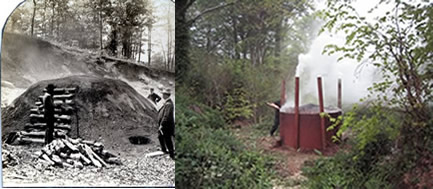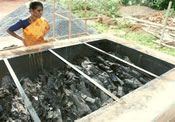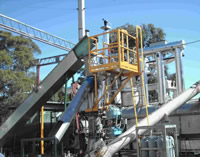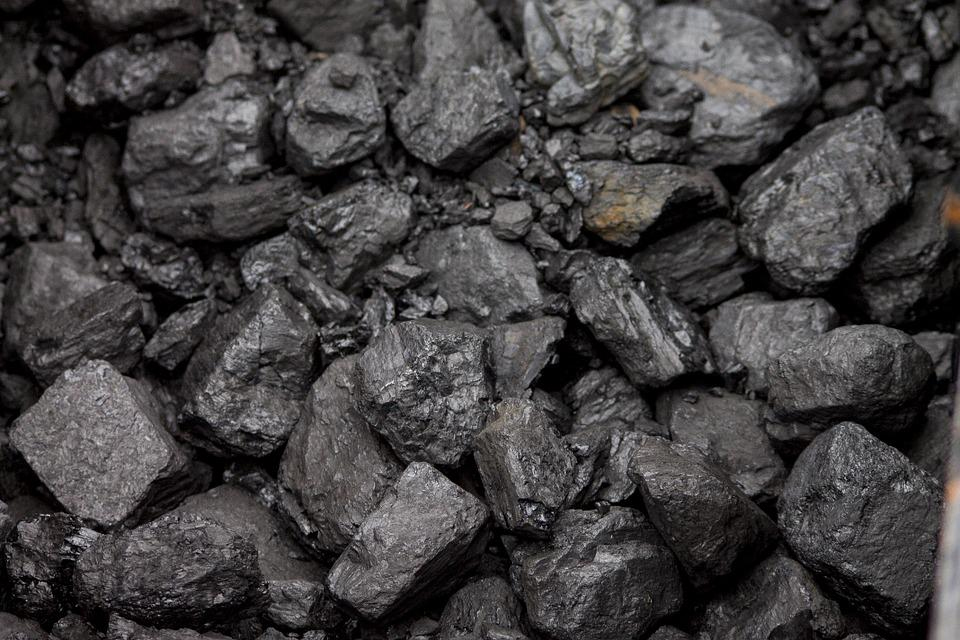Ancient Process
Charcoal is created both naturally as a result of vegetation fires and intentionally by humans in burn pits and hand-made structures. When charcoal is made for the purpose of adding it to soil as an amendment, it's called biochar. Despite the good things that biochar can do for soils, making charcoal in the traditional method is not an environmentally friendly practice.
The first evidence of charcoal made by humans being used as a soil amendment was in the Amazon Basin of South America over 2,500 years ago. Archaeological evidence suggests that ancient people piled and covered wood in earthen pits, then burned it slowly with limited air. This method, still used today in developing countries, creates considerable smoke and releases half the carbon dioxide (CO2) in the original biomass along with other greenhouse gasses (GHG's). That's not healthy for people or the atmosphere and all that heat (energy) is wasted.
 Kiln Technology— Production techniques did not advance significantly for centuries except to use kilns instead of earthen mounds. Kilns to produce char are built out of dirt, bricks and even steel. But these kilns still emit a lot of particulates and smoke including greenhouse gasses responsible for global climate disruption.
Kiln Technology— Production techniques did not advance significantly for centuries except to use kilns instead of earthen mounds. Kilns to produce char are built out of dirt, bricks and even steel. But these kilns still emit a lot of particulates and smoke including greenhouse gasses responsible for global climate disruption.
Capturing Energy— Today, biochar is produced using pyrolysis, that is, biomass is super-heated in the absence of oxygen at high temperatures (350-700° C) in specially designed furnaces. The most sustainable feed stocks are what's now considered waste: excess manure, wood debris, construction waste, slash from forest thinning, food processing waste, residue from methane digesters or urban tree trimmings. Most of this would be left to rot, be open-burned or dumped in a land fill.
In this modern method, volatile gasses, hydrocarbons and most of the oxygen and hydrogen in the biomass are burned or driven off and captured, including GHG's. These captured emissions are known as syngas (synthetic gas) and can be used like natural gas. Liquids, called bio-oils, are also captured creating another source of energy, leaving carbon enriched biochar. The heat generated during the pyrolysis process can generate electricity too!
 Biochar Production Today
Biochar Production Today
There are pyrolysis ovens for any need, from camp stoves to industrial-sized units for creating electricity and heating large buildings. Small stoves are being employed in third world countries to reduce the smoke from open fires inside homes, more efficiently burn materials and produce a soil amendment at the same time.
 Japan, China and Australia innovated producing biochar in small pyrolysis ovens like those on the left. Great for residential use, these units dispose of waste, generate heat and power and produce biochar for the family garden. Stoves bigger than these can be converted to mobile units and taken to the biomass source saving on transportation costs when large amounts of biomass are available periodically but not regularly in a specific location.
Japan, China and Australia innovated producing biochar in small pyrolysis ovens like those on the left. Great for residential use, these units dispose of waste, generate heat and power and produce biochar for the family garden. Stoves bigger than these can be converted to mobile units and taken to the biomass source saving on transportation costs when large amounts of biomass are available periodically but not regularly in a specific location.
 Stoves don't need to be high-tech. The primitive oven pictured here uses pyrolysis technology but in a size and price range suitable for small farms, ranches and woodlots.
Stoves don't need to be high-tech. The primitive oven pictured here uses pyrolysis technology but in a size and price range suitable for small farms, ranches and woodlots.
 Larger units are more practical for large farms or district heating needs, creating bio-oil, converting waste biomass into electricity, in addition to producing biochar. Studies are under way to determine how carbon credits might be sold in return for converting biomass to biochar.
Larger units are more practical for large farms or district heating needs, creating bio-oil, converting waste biomass into electricity, in addition to producing biochar. Studies are under way to determine how carbon credits might be sold in return for converting biomass to biochar.
Industrial-sized units can handle tons of biomass on a daily basis. They can produce electricity as well as biochar, bio-oils and syngas in large quantities. These stationary units depend on a steady, sustainable supply of biomass, so need to be located where they can take advantage of reasonable haul distances for feed stocks.

Click here for a printer friendly version.
